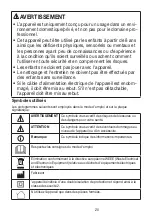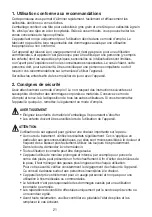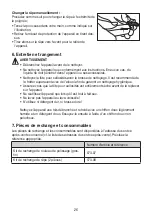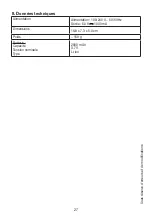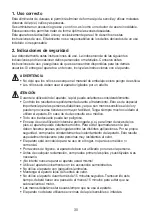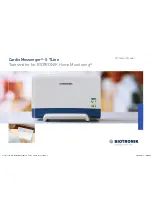
15
Notes on handling rechargeable batteries
• If your skin or eyes come into contact with fluid from the battery cell, flush out the
affected areas with water and seek medical assistance.
•
Choking hazard!
Small children may swallow and choke on rechargeable bat-
teries. Store rechargeable batteries out of the reach of small children.
• Observe the plus (+) and minus (-) polarity signs.
• If a battery has leaked, put on protective gloves and clean the battery compartment
with a dry cloth.
• Protect batteries from excessive heat.
•
Risk of explosion!
Never throw batteries into a fire.
• Do not disassemble, split or crush the rechargeable batteries.
• Only use chargers specified in the instructions for use.
• Batteries must be charged correctly prior to use. The instructions from the manu-
facturer and the specifications in these instructions for use regarding correct char-
ging must be observed at all times.
• Fully charge the battery prior to initial use (see Chapter 4).
• In order to achieve as long a battery service life as possible, fully charge the battery
at least twice per year.
Rechargeable battery disposal
For environmental reasons, do not dispose of the device in the household waste at
the end of its useful life. Dispose of the unit at a suitable local collection or
recycling point. Dispose of the device in accordance with EC Directive –
WEEE (Waste Electrical and Electronic Equipment). If you have any
questions, please contact the local authorities responsible for waste
disposal.
The empty, completely flat rechargeable batteries must be disposed of using specially
designated collection boxes, recycling points or electronics retailers. You are legally
required to dispose of the rechargeable batteries.
The codes below are printed on rechargeable batteries containing harmful sub-
stances:
Pb = Battery contains lead,
Cd = Battery contains cadmium,
Hg = Battery contains mercury.




















